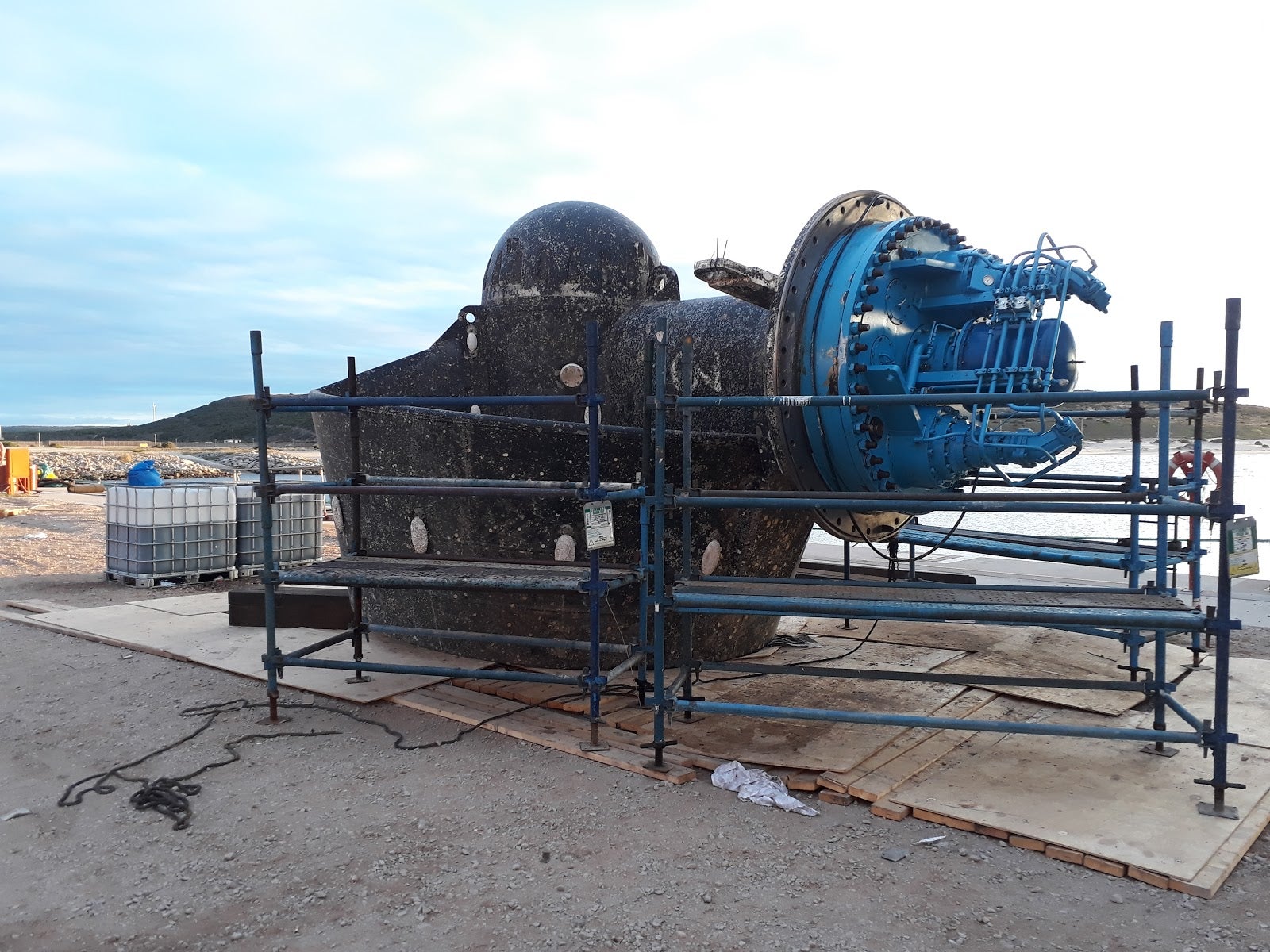
Underwater thruster removal from active Special Purpose Vessels is a specialised and technically complex operation. That means that this task has its own set of challenges and you’ll need a trustworthy and cost-effective solution, which OSC Marine can offer.
Reliability, safety, quality and customer satisfaction are core OSC Marine values and every service it provides. With a task that can be as complex and pose as many challenges as thruster removal, we have established ourselves as the go-to company for reliable and dynamic solutions.
Successful thruster removal operations typically include:
- Preparation of the thruster compartment
- Disconnection of services to the thruster
- Cleaning around the thruster flange (click here for more information about our hull cleaning services)
- Loosening and lowering the thruster
- Transferring the thruster load to a suitable crane
- Isolate the thruster compartment
- Reinstallation after repairs
Underwater challenges
The biggest challenge here is that since the thruster is situated several meters below the surface, removing it is a high-risk activity. If the correct methodology is not used or incorrect equipment is used, there will always be a risk of flooding the entire vessel. The damage this could cause is insurmountable, not to mention the safety risk to all the people on board.
Therefore, special covers and domes must be installed before removing a thruster. This kind of equipment can be difficult to get your hands on as they need to be sourced from either the original ship or thruster manufacturers, or they need to be engineered from scratch for the job, both of which OSC Marine has the capacity and capability to do.
Location challenges for thruster removal
Underwater thruster removal typically takes place in protected ports and anchorages. In some cases, this can also take place offshore in active oil and gas fields. Very specific location conditions are required for thruster removal to take place safely.
Firstly, we need access to a specific depth beneath the hull. The depth of work for a thruster removal is typically below 10m subsea. OSC Marine will always ensure the use of a chamber on-site at the dive location, taking responsibility to comply with IOGP guidelines and oil and gas operator’s safety standards.
Thruster removal also requires access to cranes on and in the water. Most SPS vessels should be equipped with offshore-compliant cranes. In order for a crane to be used on board, the vessel is required to be active. While this is fine for thruster removal, it can be challenging when the thruster is replaced. This is because the cooling intake that provides power to the crane could cause problems when isolating hazards before diving to replace the thruster.
In addition to these location challenges, thruster removal also requires suitable ocean currents and good visibility. As you can imagine, it can be quite a challenge to get all these moving pieces perfectly in place. But with many years of experience, working together with OSC Marine will ensure a successful thruster removal and reinstallation.
Thruster disconnection challenges
Thruster seals are one component that can be easily damaged. If they are damaged from cleaning (for example, if an HP water jet was used to clean them) or they were installed incorrectly, this increases the chance of them getting damaged further during thruster removal. OSC Marine has a robust cleaning method and will always ensure that the process of installation is correct, preventing further and future damage. This is critical to the long and reliable operation of your thruster.
Above-water thruster challenges
Both thruster removal methods available require lifting from or lowering the seabed on a dedicated stand. For underslung loads such as these, it is important to have a wooden bunding and levelled surface. This will ensure a safe and protective workspace on the quayside.

